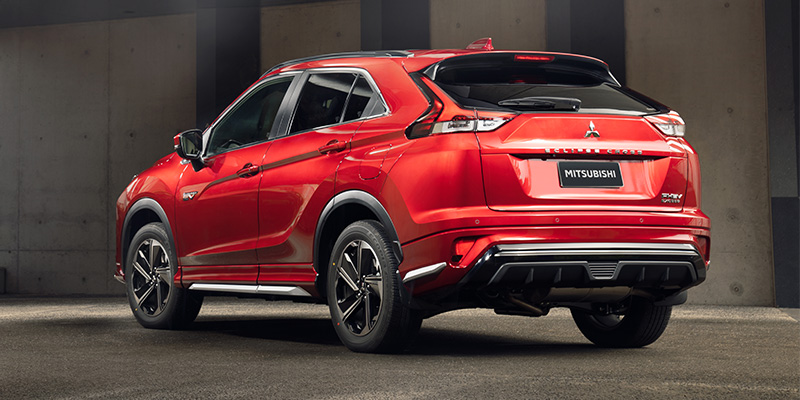2022 Mitsubishi Eclipse Cross PHEV review


The miserly 2022 Mitsubishi Eclipse Cross plug-in hybrid electric vehicle (PHEV) is cheap to run, but comes at a cost.
Mitsubishi more or less started Australia’s PHEV market when it launched its Outlander PHEV in 2014.
The technology has now become more widely accepted and has found a new home in the Mitsubishi Eclipse Cross that was first launched late in 2018 as a replacement for the ageing ASX (which, due to its popularity, is still in the line-up).
Interestingly, the recently-upgraded Eclipse Cross is roughly the same size as the first Outlander PHEV. Partly explaining this growth spurt is a revised body, which is 140mm longer than the first generation and provides extra luggage capacity and improved rearward vision courtesy of a redesigned tailgate.
How much does the 2022 Mitsubishi Eclipse Cross PHEV cost?
There’s a $13,000 price hike over the petrol versions for the 2022 Mitsubishi Eclipse Cross PHEV. The line-up consists of the ES ($46,490), Aspire ($49,990) and Exceed ($53,990).
Three accessory packs are available: Style Set ($3321) adds silver exterior trim garnishes, Adventure Kit ($2490) features a front nudge bar, and the Protection Pack ($975) adds floor mats and headlamp and hood protectors.
2022 Mitsubishi Eclipse Cross PHEV power, torque and charging
At the heart of the PHEV is a complex system that uses a lithium-ion battery, two electric drive motors and a petrol engine/generator that charges the battery and provides power in high-demand driving situations, such as accelerating uphill and overtaking.
Charging the battery with either a conventional 240-volt power outlet or fast charger provides 55km of range. That doesn’t sound like much, but according to Mitsubishi it adequately covers many families’ daily commuting tasks.
Charging times are around two to seven hours using a 10-amp power outlet or as little as 25 minutes using a 50kWh DC fast charger.



Once the charge in the battery is exhausted, the system switches to either ‘series hybrid’ mode (where the petrol engine/generator aids the two electric motors, helping charge the battery and provide drive power) or ‘parallel hybrid’ mode (where the 2.4-litre petrol engine drives the front wheels and electric motors, directing any excess charge back to the battery).
That’s a lot to digest, but thankfully the sophisticated powertrain control system does it all for you, selecting the most efficient drive mode based on the conditions and always defaulting to EV mode when possible. The Eclipse Cross PHEV also has a brake regeneration system that can be dialled up or down to charge the battery and reduce the reliance on conventional braking.
How does the 2022 Mitsubishi Eclipse Cross PHEV drive?
Around town the PHEV is quiet and, when the 50km battery range is exhausted, the transitions to series and parallel modes are seamless. Under hard acceleration the 2.4-litre petrol engine becomes audible but is far quieter than the outgoing Outlander PHEV.
Seat comfort is excellent, as are smoothness and quietness levels. Leaving the suburbs for the open road, the Eclipse Cross delivers a supple ride and reasonable body control with minimal sway through corners. Overall fuel consumption on test with mainly highway driving was 6.3L/100km.
The Eclipse Cross PHEV’s strengths are centred on urban use and its ability to cover most daily drives in EV mode, but it’s also capable on longer journeys, giving little away to many conventionally-powered small and mid-sized SUVs. Additionally, it features vehicle to home (V2H) and vehicle to grid (V2G) capability, which will utilise energy stored in the battery to power your home or feed the grid in the near future.

2022 Mitsubishi Eclipse Cross PHEV price and specs
- Engine size: 2.4-litre four-cylinder petrol/electric motor
- Transmission: hybrid CVT
- Power: 110kW
- Torque: 199Nm
- Fuel consumption: 1.9L/100km (claimed)
- ANCAP safety rating: five stars
- Price: From $46,490 (plus ORC)
Thinking of getting into a 2022 Mitsubishi Eclipse Cross PHEV?
Members save on new-car loans.









